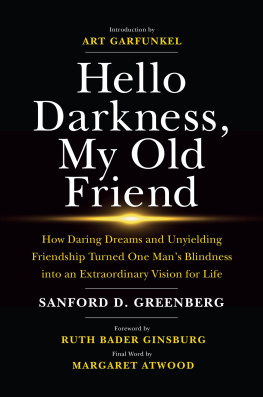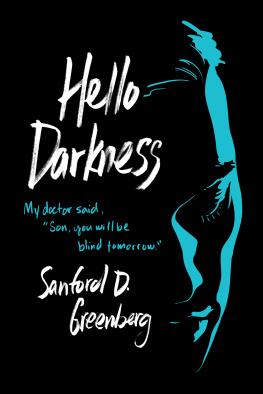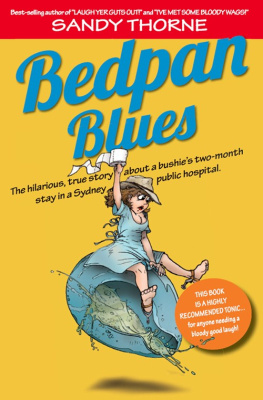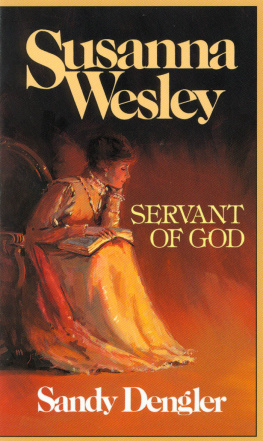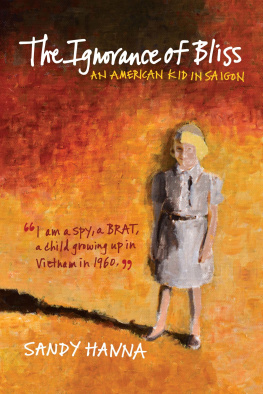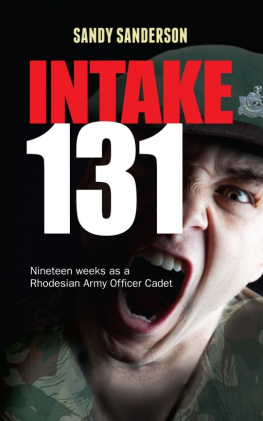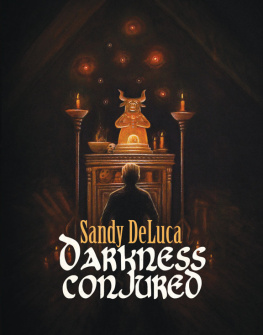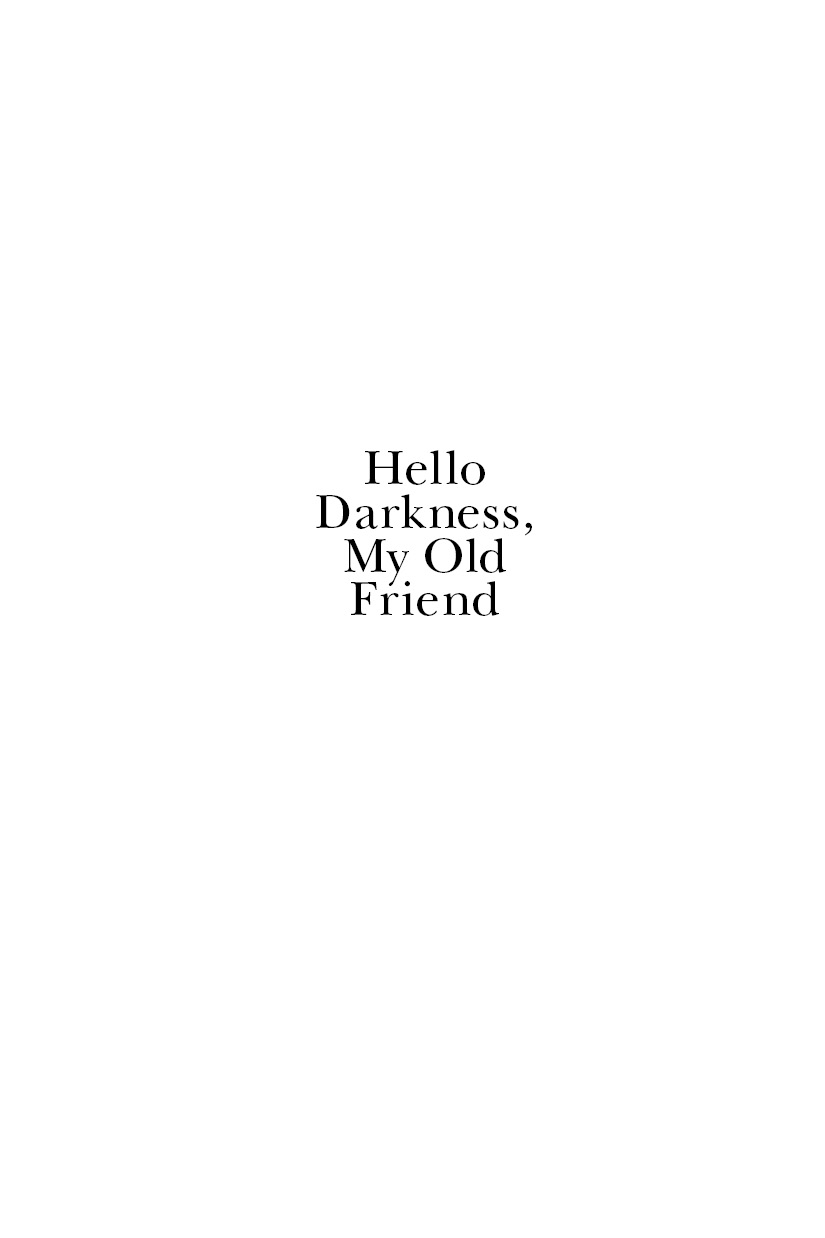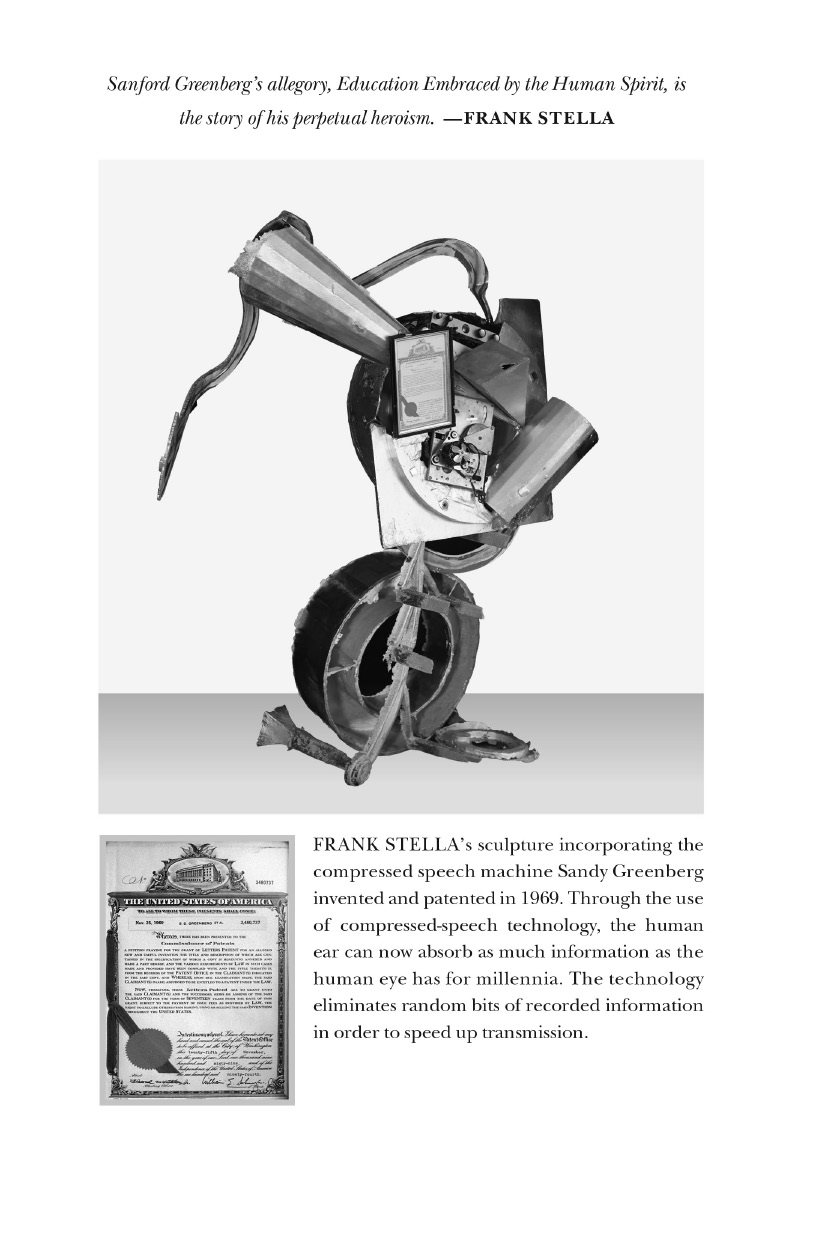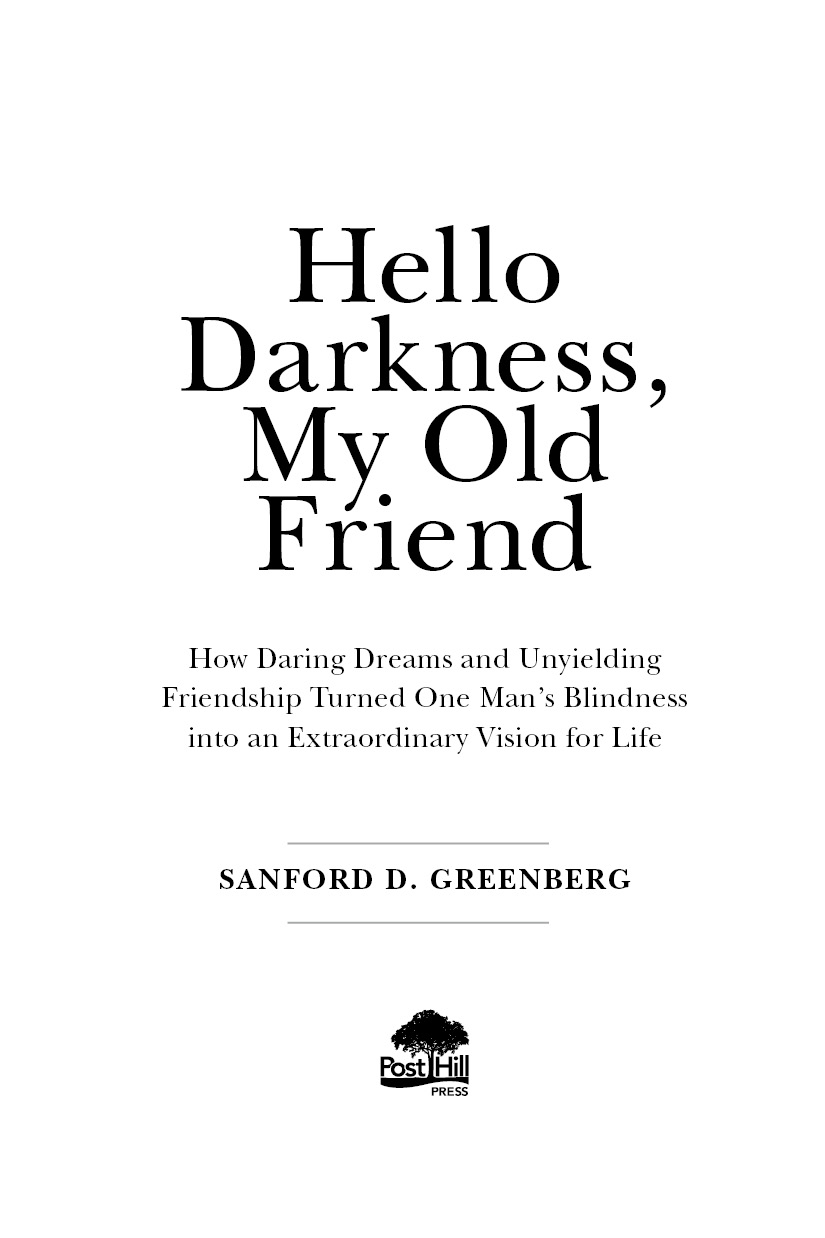Perspectives
Light emerged from darkness in Genesis, in the creation of the heavens and the earth. Light also emerged from darkness in the life of Sandy Greenberg. This memoir reveals a triumph of the human spirit. It is the story of a man brought from blindness to richness, from darkness to light, through his passion and his accomplishments, and from a deep commitment from those who loved him. This book renews life in us all.
Richard Axel, 2004 Nobel Laureate in Physiology or Medicine
Sandy plays the hand he got and tries to make the world a better place. He has aspirations and hope. Sandy is a role model for all of us.
Michael Bloomberg
When blindness is vanquished, and it will be, we will have Sandy Greenberg and his story to thank.
Senator Chris Coons
There is no greater measure of character than viewing ones personal setbacks as a call to serve others. Sandy and Sue soared above their personal challenges and dedicated their lives to making a positive change in the world. Were confident that this magnificent book will be one of the most inspirational you will ever read.
Elizabeth and Bob Dole
An inspirational story of resilience, determination, achievement and, mostly, of the power of friendship and love. I could not stop reading this extraordinary book about an extraordinary journey.
Susan Goldberg, Editor-in-Chief, National Geographic
An inspiring must-read for anyone facing challenges in life, as a guide to beating the odds and making your impact on the world.
Vice President Al Gore
A majestic book, authored by the most haimish of men. This should be required reading for every young person with a dream of helping their community.
Senator Ron Wyden
A POST HILL PRESS BOOK
Hello Darkness, My Old Friend:
How Daring Dreams and Unyielding Friendship Turned One Mans Blindness into an Extraordinary Vision for Life
2020 by Sanford D. Greenberg
All Rights Reserved
ISBN: 978-1-64293-497-7
ISBN (eBook): 978-1-64293-498-4
Cover art by Jason Heuer
Interior design and composition by Greg Johnson, Textbook Perfect
Afterword by Margaret Atwood O.W. Toad Ltd 2020
This is a work of nonfiction. All people, locations, events, and situations are portrayed to the best of the authors memory.
No part of this book may be reproduced, stored in a retrieval system, or transmitted by any means without the written permission of the author and publisher.

Post Hill Press
New York Nashville
Published in the United States of America
Distributed by Simon and Schuster
For Sue, the one who has always been there
Contents
Had I the heavens embroidered cloths,
Enwrought with golden and silver light,
The blue and the dim and the dark cloths
Of night and light and the half-light,
I would spread the cloths under your feet:
But I, being poor, have only my dreams;
I have spread my dreams under your feet;
Tread softly because you tread on my dreams.
William Butler Yeats
Supreme Court of the United States
Washington, DC
A few days after the 20102011 Court term ended, my good neighbor at Watergate South, Sandy Greenberg, visited me in chambers. He had done so the year before, just to see how I was faring at work after the death of my husband. He is that kind of caring man. But this time he came to convey a request. Sandy had composed a volume reflecting on his lifes extraordinary course. He asked if I would read the manuscript and perhaps write a brief foreword. I spent every spare hour the next week reading Sandys remembrances. Often his memories brought smiles; other times they left me near to tears. From the first page to the last, I was captivated by his bright mind, ready wit, and indomitable spirit.
A snapshot of Sandy in 1958 at age seventeen: brainy, athletic, president of his Buffalo, New York, high-school senior class and of the schools student council, trumpet player, a tall and all-around good fellow. That year, he entered Columbia College on full scholarship. There he thrived on learning, made lasting friendships, and experienced the citys many wonders. In steady correspondence, he described his adventures to the love of his life since sixth grade, Sue Roseno, his beloved wife and soul mate now for a half century.
At age nineteen, midway through his third year at Columbia, Sandy became blind. Initial despair over his total loss of sight gave way, in small time, to a fierce determination not to be seen, or to live his life, as a blind man. He played the part well. Sandy would have no dog, or even a cane. If you were to see me in the hallway of the Watergate, he observed, you would not know I am blind. Quite so. I had been told, when we bought an apartment at the Watergate in 1980, two doors up from Sandy and Sues, that his vision was poor. He could see shapes but not faces; he wore thick glasses to magnify things. I believed what I was told.
A half-dozen years passed before I learned the harsh truth. In 1986, I heard Sandy say to a throng of well-wishers: I am blind. The occasion was his induction as a Fellow of Brandeis University at a celebration in DC. Sandy could, at last, publicly acknowledge his blindness, for he had proved, time and again, that he had developed other ways to see the world. Ideas and images generated in his mind sparked inventionsprime among them, a speech-compression machine that speeds up the reproduction of words from recordings without garbling any sounds. His agile mind also planned a succession of well-designed, impressively profitable business enterprises.
Sandys reflections have a main theme. Though robbed of his sight (owing to the repeated misdiagnosis of an ophthalmologist in his hometown), he considers himself the luckiest man in the world. How can that be, the reader, early on, is likely to ask. Sandy writes of his handholds: his family, heritage, friends, education at Columbia, Harvard, and Oxford; his White House Fellowship, which fostered collegial relationships with persons of importance in government, commerce, and the arts; his service on the National Science Board and numerous other governing bodies; his three children and now four grandchildren; and, above all else, his partnership in life with Sue, whose love and support sustain him in all things.
Yet something more, he relates, accounts for his good life, something sighted people cannot possess with the same intensity. Sandy calls it his informed life within the mind, a mind in which thoughts proliferate and assemble undisturbed by the constant flow of visual sense images. That special facility has helped him to experience the joys of being alive and to contribute abundantly to the well-being of others.
From a hospital bed in Detroit in February 1961, his sightless eyes moist with medication, Sanford D. Greenberg made a deal with God. If the Lord got him out of this hole, Sandy vowed, he would do all he could to prevent others from going through grief like this in the future. He has carried through on that promise, directing prodigious energy to the development of technology for optic-nerve regeneration. To the same end, his steady hand is at the helm of the Johns Hopkins Wilmer Eye Institute. These endeavors and multiple other pro bono initiatives are cause for the Big Party Sandy hosts in a dreamspiel he imagines and records with lan in a chapter of this book.

